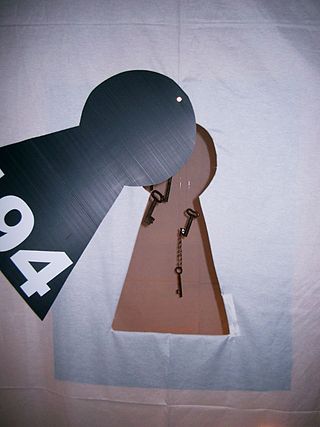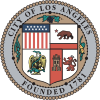Related Research Articles

Palestinians are an Arab ethnonational group native to the region of Palestine.

Palestinian Christians are a religious community of the Palestinian people consisting of those who identify as Christians, including those who are cultural Christians in addition to those who actively adhere to Christianity. They are a religious minority within the State of Palestine and within Israel, as well as within the Palestinian diaspora. Applying the broader definition, which groups together individuals with full or partial Palestinian Christian ancestry, the term was applied to an estimated 500,000 people globally in the year 2000. As most Palestinians are Arabs, the overwhelming majority of Palestinian Christians also identify as Arab Christians.
Palestinian refugees are citizens of Mandatory Palestine, and their descendants, who fled or were expelled from their country, village or house over the course of the 1948 Palestine war and during the 1967 Six-Day War. Most Palestinian refugees live in or near 68 Palestinian refugee camps across Jordan, Lebanon, Syria, the West Bank and the Gaza Strip. In 2019 more than 5.6 million Palestinian refugees were registered with the United Nations.

Arab Americans are Americans of Arab ancestry. Arab Americans trace ancestry to any of the various waves of immigrants from the Arab world. In the United States census, Arabs are racially classified as White Americans because "White" is defined as "A person having origins in any of the original peoples of Europe, the Middle East, or North Africa".
The population of the region of Palestine, which approximately corresponds to modern Israel and the Palestinian territories, has varied in both size and ethnic composition throughout the history of Palestine.

Arab diaspora is a term that refers to descendants of the Arab emigrants who, voluntarily or as forcibly, migrated from their native lands to non-Arab countries, primarily in the Americas, Europe, Southeast Asia, and West Africa.

The phenomenon of large-scale migration of Christians is the main reason why Christians' share of the population has been declining in many countries. Many Muslim countries have witnessed disproportionately high emigration rates among their Christian minorities for several generations. Today, most Middle Eastern people in the United States are Christians, and the majority of Arabs living outside the Arab World are Arab Christians.

Demographic features of the population of the area commonly described as the Palestinian territories includes information on ethnicity, education level, health of the populace, economic status, religious affiliations and other aspects of that population.

Abd Al Aziz Awda, also known as Sheik Awda, is a Palestinian cleric who, along with Fathi Shaqaqi, founded the Islamic Jihad Movement in Palestine, also known as the Palestinian Islamic Jihad (PIJ), an Islamist paramilitary organization based in Damascus, Syria.

Lebanese Americans are Americans of Lebanese descent. This includes both those who are native to the United States of America, as well as immigrants from Lebanon.
The Institute for Middle East Understanding (IMEU) is a 501(c)(3) Pro-Palestinian non-profit advocacy organization.

The Palestinian right of return is the political position or principle that Palestinian refugees, both first-generation refugees and their descendants, have a right to return and a right to the property they themselves or their forebears left behind or were forced to leave in what is now Israel and the Palestinian territories during the 1948 Palestinian expulsion and flight and the 1967 Six-Day War.

Kurds in the United States refers to people born in or residing in the United States of Kurdish origin or those considered to be ethnic Kurds.

Jalazone is a Palestinian refugee camp in the Ramallah and al-Bireh Governorate, located 7 kilometers (4.3 mi) north of Ramallah and adjacent to the village of Jifna to the north, Deir Dibwan to the east, Bir Zeit to the west and the Beit El Israeli settlement to the southeast.

Arab Argentine refers to Argentine citizens or residents whose ancestry traces back to various waves of immigrants, largely of Arab ethnic, cultural and linguistic heritage and/or identity originating mainly from what is now Lebanon and Syria, but also some individuals from the twenty-two countries which comprise the Arab world such as Palestine, Egypt and Morocco. Arab Argentines are one of the largest Arab diaspora groups in the world.

The Sons of Eilaboun is a 2007 documentary film by Palestinian artist and film maker Hisham Zreiq (Zrake), that tells the story of the Eilabun massacre, which was committed by the Israeli army during Operation Hiram in October 1948. Eilaboun is a village in the Northern Galilee between Nazareth and the Sea of Galilee. In the incident, fourteen men were killed and twelve of them were executed. The villagers were expelled to Lebanon and became refugees for few months, before being allowed to return in 1949.
In the 1948 Palestine war, more than 700,000 Palestinian Arabs – about half of Mandatory Palestine's predominantly Arab population – were expelled or fled from their homes, at first by Zionist paramilitaries, and after the establishment of Israel, by its military. The expulsion and flight was a central component of the fracturing, dispossession, and displacement of Palestinian society, known as the Nakba. Dozens of massacres targeting Arabs were conducted by Israeli military forces and between 400 and 600 Palestinian villages were destroyed. Village wells were poisoned in a biological warfare programme codenamed Operation Cast Thy Bread and properties were looted to prevent Palestinian refugees from returning. Other sites were subject to Hebraization of Palestinian place names.

Palestinian Americans are Americans who are of full or partial Palestinian descent.

The Detroit metropolitan area has one of the largest concentrations of people of Middle Eastern origin, including Arabs and Chaldo-Assyrians in the United States. As of 2007 about 300,000 people in Southeast Michigan traced their descent from the Middle East. Dearborn's sizeable Arab community consists largely of Lebanese people who immigrated for jobs in the auto industry in the 1920s, and of more recent Yemenis and Iraqis. In 2010 the four Metro Detroit counties had at least 200,000 people of Middle Eastern origin. Bobby Ghosh of TIME said that some estimates gave much larger numbers. From 1990 to 2000 the percentage of people speaking Arabic in the home increased by 106% in Wayne County, 99.5% in Macomb County, and 41% in Oakland County.

The Palestinian diaspora, part of the wider Arab diaspora, are Palestinian people living outside the region of Palestine.
References
- 1 2 3 4 Kurson, Ken. "Palestinian Americans". Countries and Their Cultures. Retrieved 24 November 2014.
- ↑ McDowall, David; Claire Palley (1987). The Palestinians. Minority Rights Group Report no 24. p. 10. ISBN 978-0-946690-42-8.
- ↑ "Are Arabs and Iranians white? Census says yes, but many disagree". www.latimes.com. Retrieved 2021-01-08.
- ↑ "Arab American Institute Foundation Census for California" (PDF).
- 1 2 3 4 5 6 7 US Census Bureau, 2006-2010 American Community Survey
- ↑ "Los Angeles Intifada". Michigan Quarterly Review. 2020-10-14. Retrieved 2021-01-08.
- ↑ Cole, David; Bennis, Phyllis (Winter 1996). "Ten Years of the Los Angeles Eight Deportation Case: Interview with David Cole". Middle East Report. 202 (Power, Poverty and Urban Survival): 41. doi:10.2307/3013042. JSTOR 3013042.
- ↑ Gabriel, Judith. "Palestinians Arrested in Los Angeles Witch-hunt". Archived from the original on 4 March 2016. Retrieved 24 November 2014.
- ↑ "FAQs about Al-Awda". Al-Awda: The Palestine Right to Return Coalition. September 23, 2014.
- ↑ "Palestinian Women's Association".
- ↑ "American Muslims for Palestine". Archived from the original on 2014-11-14. Retrieved 2014-11-24.
- ↑ "Palestinian Children's Relief". Archived from the original on 2014-11-20. Retrieved 2014-11-24.
- ↑ "Islamic Relief".
